-
 Bitcoin
Bitcoin $86,583.4721
2.16% -
 Ethereum
Ethereum $1,895.5281
-0.85% -
 Tether USDt
Tether USDt $1.0001
0.02% -
 XRP
XRP $2.1445
-0.75% -
 BNB
BNB $606.2368
-1.73% -
 Solana
Solana $129.0211
0.29% -
 USDC
USDC $1.0001
0.01% -
 Dogecoin
Dogecoin $0.1741
0.48% -
 Cardano
Cardano $0.6906
0.32% -
 TRON
TRON $0.2378
0.95% -
 Toncoin
Toncoin $4.0603
-0.37% -
 Chainlink
Chainlink $13.9750
-1.85% -
 UNUS SED LEO
UNUS SED LEO $9.3633
0.25% -
 Stellar
Stellar $0.2715
-1.36% -
 Avalanche
Avalanche $19.5219
-1.19% -
 Sui
Sui $2.4731
-0.43% -
 Shiba Inu
Shiba Inu $0.0...01260
-2.95% -
 Hedera
Hedera $0.1706
-1.92% -
 Polkadot
Polkadot $4.1559
-2.29% -
 Litecoin
Litecoin $84.3085
-1.31% -
 Bitcoin Cash
Bitcoin Cash $309.2588
-1.90% -
 MANTRA
MANTRA $6.3164
-0.47% -
 Bitget Token
Bitget Token $4.6190
-0.40% -
 Dai
Dai $0.9998
-0.03% -
 Ethena USDe
Ethena USDe $0.9999
-0.02% -
 Hyperliquid
Hyperliquid $14.0049
2.30% -
 Pi
Pi $0.6789
-4.89% -
 Monero
Monero $219.7111
0.98% -
 Uniswap
Uniswap $6.1866
-1.34% -
 Aptos
Aptos $5.3747
-1.07%
How to stake tokens in Trust Wallet?
Stake tokens in Trust Wallet to earn rewards, but choose reputable validators and understand risks like impermanent loss. Always verify token-specific instructions.
Mar 28, 2025 at 07:28 am
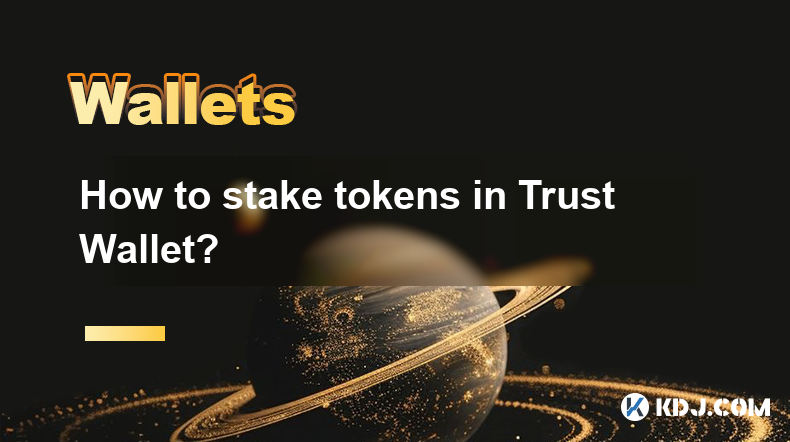
Understanding Trust Wallet's Staking Functionality
Trust Wallet, a popular mobile cryptocurrency wallet, offers a convenient way to stake various tokens directly within the app. Staking allows you to lock up your tokens for a set period, earning rewards in return for contributing to the security and validation of the blockchain network. The process varies slightly depending on the specific token and the network it operates on. However, the core principles remain consistent. Before you begin, ensure you have the Trust Wallet app installed and updated to the latest version. Also, understand the risks involved, including potential impermanent loss for liquidity pool staking.
Step-by-Step Guide to Staking in Trust Wallet
The exact steps might differ slightly depending on the specific token you wish to stake. However, the general process usually follows these steps:
Locate the Staking Option: Open your Trust Wallet app and navigate to the token you want to stake. Look for a button or option labeled "Stake," "Earn," or something similar. This is usually found on the token's details page.
Choose a Validator (If Applicable): For Proof-of-Stake (PoS) networks, you’ll need to select a validator node. Validators are responsible for verifying transactions and adding new blocks to the blockchain. Choose a reputable validator with a good track record and uptime. Research thoroughly before making your selection.
Input the Amount: Enter the amount of tokens you wish to stake. Remember, the minimum staking amount varies depending on the token and network. Check the requirements before proceeding.
Confirm the Transaction: Review the details of your staking transaction, including the amount, validator (if applicable), and the expected rewards. Once you're satisfied, confirm the transaction. This usually involves signing a transaction using your wallet's security features.
Monitor Your Staking: After confirmation, your tokens will begin accruing rewards. You can usually monitor your staking progress and accumulated rewards directly within the Trust Wallet app. The frequency of reward payouts varies depending on the token and network.
Staking Different Types of Tokens
Trust Wallet supports staking for a range of tokens. However, the process and available options might differ based on the token's underlying blockchain and consensus mechanism. For example, staking Cosmos (ATOM) will differ from staking Tezos (XTZ). Always verify the specific instructions and requirements for your chosen token. Some tokens may offer flexible staking, allowing you to unstake your tokens at any time, while others may have a lock-up period. Always carefully read the terms and conditions before staking.
Understanding Staking Rewards and APY
Staking rewards are typically paid out in the same token you staked. The Annual Percentage Yield (APY) represents the potential return on your investment over a year. Remember that APY is not guaranteed and can fluctuate based on various factors, including network congestion and validator performance. The APY displayed in Trust Wallet is an estimate and should not be considered a fixed return.
Security Considerations When Staking
Security is paramount when dealing with cryptocurrencies. Only stake your tokens in reputable wallets like Trust Wallet and choose well-established and trustworthy validators. Avoid unknown or suspicious staking platforms. Always double-check the transaction details before confirming any staking operation. Keep your wallet's security phrase safe and never share it with anyone.
Troubleshooting Common Issues
Transaction Failure: If your staking transaction fails, check your internet connection, ensure you have enough gas fees (if applicable), and verify that your wallet has sufficient balance.
Unable to Find Staking Option: Some tokens may not support staking directly within Trust Wallet. Check the token's documentation or community forums for alternative staking methods.
Low or No Rewards: Low or no rewards might indicate an issue with the validator you chose or a temporary network congestion. Check the validator's status and wait for a while before investigating further.
Unstaking Issues: If you're facing difficulties unstaking your tokens, refer to the specific token's documentation or contact Trust Wallet support. Unstaking periods can vary depending on the token.
Frequently Asked Questions
Q: Is staking in Trust Wallet safe?
A: Trust Wallet is a reputable wallet, but staking always involves risk. Choose validators carefully and always double-check transaction details before confirming. The security of your funds depends largely on your own security practices.
Q: What are the risks associated with staking?
A: Risks include validator downtime, slashing penalties (for some networks), and fluctuations in the value of the staked token. Impermanent loss is a risk for liquidity pool staking.
Q: How long does it take to stake tokens?
A: The time it takes to stake varies. Some tokens are staked instantly, while others may have a short waiting period. Unstaking periods also vary depending on the token and network.
Q: What are gas fees?
A: Gas fees are transaction fees paid to the network for processing your staking transaction. The amount varies depending on the network's congestion.
Q: Can I unstake my tokens at any time?
A: This depends on the specific token. Some tokens allow for flexible staking, while others have lock-up periods. Check the token's documentation for details.
Q: What if I forget my password?
A: If you forget your password, you may need to recover your wallet using your seed phrase. Keep your seed phrase safe and secure, as it's the only way to recover your wallet. Never share it with anyone.
Q: What happens if the validator I chose goes offline?
A: While the risk is low with established validators, there is a small chance a validator might go offline. You should monitor the validator's status and consider switching to another one if necessary. Your staked tokens will remain secure, but you might miss out on rewards during the downtime. Choose reputable validators with a good track record to mitigate this risk.
Q: Can I stake multiple tokens at once?
A: Yes, you can stake multiple tokens within Trust Wallet simultaneously, provided each token supports staking within the app. Manage your staking portfolio carefully and monitor each token individually.
Q: Where can I find more information about staking specific tokens?
A: You can find more information on the specific token's website or community forums. Trust Wallet's in-app help section may also provide relevant information. Always verify information from multiple trusted sources before making any staking decisions.
Disclaimer:info@kdj.com
The information provided is not trading advice. kdj.com does not assume any responsibility for any investments made based on the information provided in this article. Cryptocurrencies are highly volatile and it is highly recommended that you invest with caution after thorough research!
If you believe that the content used on this website infringes your copyright, please contact us immediately (info@kdj.com) and we will delete it promptly.
- The broader crypto market witnessed a rebound today
- 2025-04-02 23:55:12
- 3 Oaks Gaming Enters the UK iGaming Market Through a New Partnership with BVGroup
- 2025-04-02 23:55:12
- XRP Price Has Continued To Stay In The Red, Consolidating In The $2.10 Range Over The Past Few Days
- 2025-04-02 23:50:12
- Is Kaspa (KAS) Still Worth Holding in 2025 Despite Prolonged Struggles?
- 2025-04-02 23:50:12
- Circle Labs Inc. (USDC) IPO Filing Sheds Light on Its Relationship with Coinbase
- 2025-04-02 23:45:12
- Seamless Migrates Its Entire Infrastructure to Morpho Labs
- 2025-04-02 23:45:12
Related knowledge
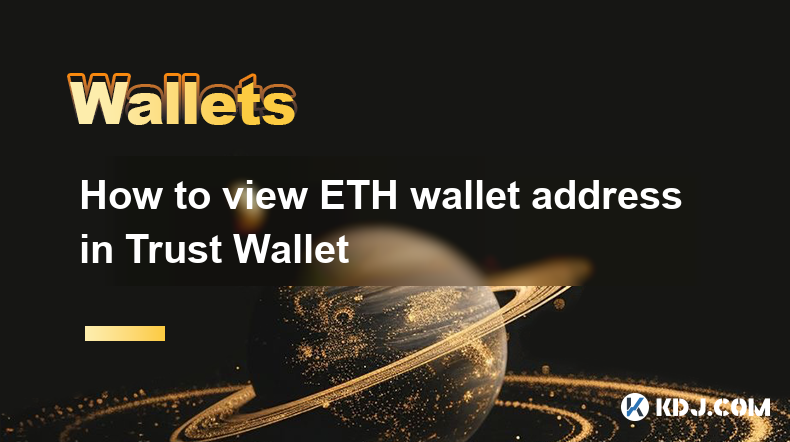
How to view ETH wallet address in Trust Wallet
Apr 02,2025 at 10:56pm
Managing your Ethereum (ETH) wallet address is crucial for anyone involved in the cryptocurrency space, especially when using popular mobile wallets like Trust Wallet. This guide will walk you through the process of viewing your ETH wallet address in Trust Wallet, ensuring you can confidently engage in transactions, receive funds, and manage your digita...
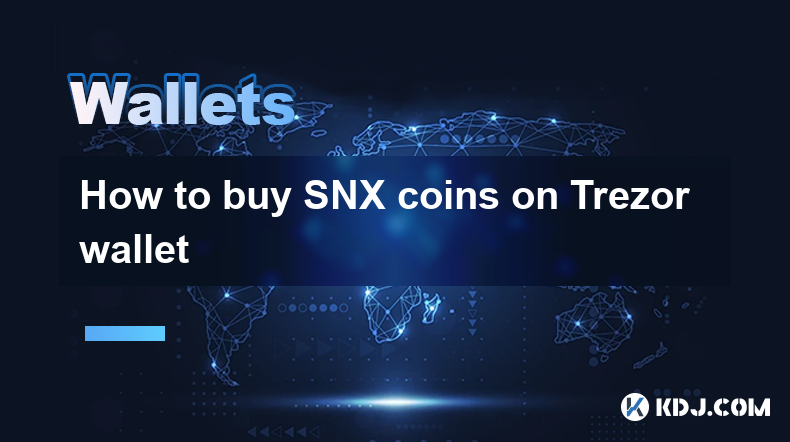
How to buy SNX coins on Trezor wallet
Apr 02,2025 at 10:00pm
Buying SNX coins, also known as Synthetix Network Tokens, using a Trezor hardware wallet involves several steps to ensure secure and efficient transactions. Trezor wallets are renowned for their security features, making them an excellent choice for storing and managing cryptocurrencies like SNX. In this guide, we will walk you through the process of pu...
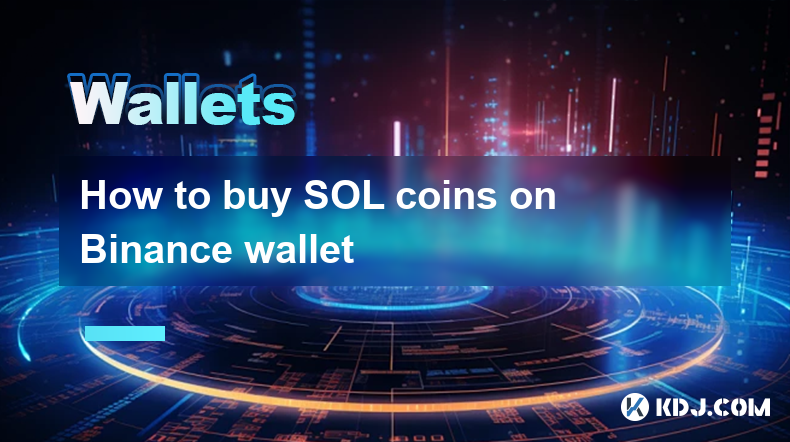
How to buy SOL coins on Binance wallet
Apr 02,2025 at 11:14pm
Buying SOL coins on Binance is a straightforward process that can be completed in a few steps. SOL, the native cryptocurrency of the Solana blockchain, is known for its high throughput and low transaction costs, making it an attractive option for many investors. Before you start, ensure you have a Binance account and have completed the necessary KYC (Kn...

Can I use a cryptocurrency wallet without real-name authentication?
Apr 02,2025 at 03:14pm
Cryptocurrency wallets have become increasingly popular as digital assets gain traction in the financial world. One of the key concerns for many users is privacy, leading to the question: The answer to this question varies depending on the type of wallet and the specific platform or service being used. In this article, we will explore the different type...
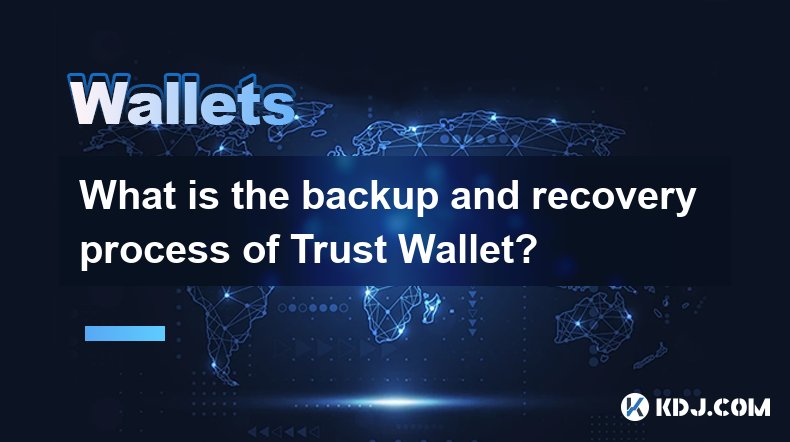
What is the backup and recovery process of Trust Wallet?
Apr 02,2025 at 04:21pm
The backup and recovery process of Trust Wallet is essential for ensuring the safety and accessibility of your cryptocurrency assets. Trust Wallet, a popular mobile wallet, offers a straightforward method to secure your funds through a process that involves creating a backup of your wallet using a recovery phrase. This recovery phrase, also known as a s...
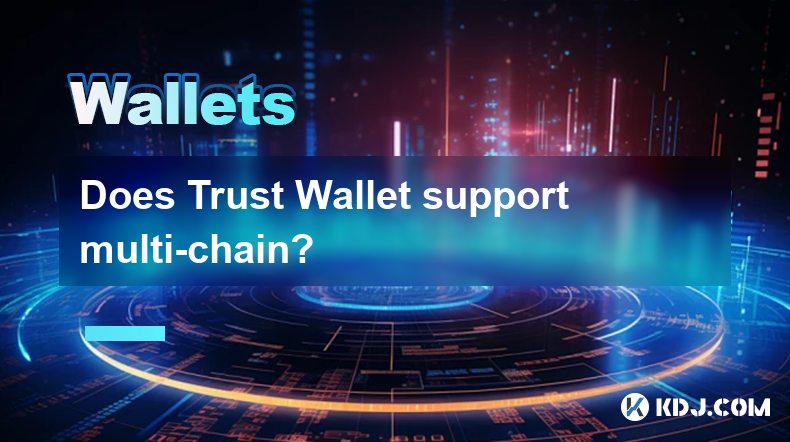
Does Trust Wallet support multi-chain?
Apr 02,2025 at 06:00pm
Trust Wallet, a popular mobile cryptocurrency wallet, has gained significant attention for its user-friendly interface and robust security features. One of the key questions users often ask is whether Trust Wallet supports multi-chain functionality. This article delves into the specifics of Trust Wallet's multi-chain support, exploring the various block...

How to view ETH wallet address in Trust Wallet
Apr 02,2025 at 10:56pm
Managing your Ethereum (ETH) wallet address is crucial for anyone involved in the cryptocurrency space, especially when using popular mobile wallets like Trust Wallet. This guide will walk you through the process of viewing your ETH wallet address in Trust Wallet, ensuring you can confidently engage in transactions, receive funds, and manage your digita...

How to buy SNX coins on Trezor wallet
Apr 02,2025 at 10:00pm
Buying SNX coins, also known as Synthetix Network Tokens, using a Trezor hardware wallet involves several steps to ensure secure and efficient transactions. Trezor wallets are renowned for their security features, making them an excellent choice for storing and managing cryptocurrencies like SNX. In this guide, we will walk you through the process of pu...

How to buy SOL coins on Binance wallet
Apr 02,2025 at 11:14pm
Buying SOL coins on Binance is a straightforward process that can be completed in a few steps. SOL, the native cryptocurrency of the Solana blockchain, is known for its high throughput and low transaction costs, making it an attractive option for many investors. Before you start, ensure you have a Binance account and have completed the necessary KYC (Kn...

Can I use a cryptocurrency wallet without real-name authentication?
Apr 02,2025 at 03:14pm
Cryptocurrency wallets have become increasingly popular as digital assets gain traction in the financial world. One of the key concerns for many users is privacy, leading to the question: The answer to this question varies depending on the type of wallet and the specific platform or service being used. In this article, we will explore the different type...

What is the backup and recovery process of Trust Wallet?
Apr 02,2025 at 04:21pm
The backup and recovery process of Trust Wallet is essential for ensuring the safety and accessibility of your cryptocurrency assets. Trust Wallet, a popular mobile wallet, offers a straightforward method to secure your funds through a process that involves creating a backup of your wallet using a recovery phrase. This recovery phrase, also known as a s...

Does Trust Wallet support multi-chain?
Apr 02,2025 at 06:00pm
Trust Wallet, a popular mobile cryptocurrency wallet, has gained significant attention for its user-friendly interface and robust security features. One of the key questions users often ask is whether Trust Wallet supports multi-chain functionality. This article delves into the specifics of Trust Wallet's multi-chain support, exploring the various block...
See all articles

























































































